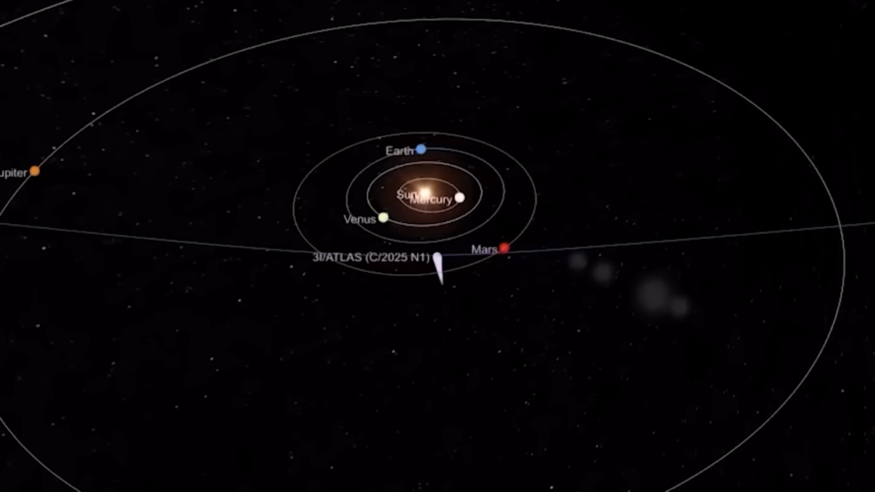
Astronomers across the world are preparing for a rare celestial showdown as interstellar comet 3I/ATLAS races towards its closest encounter with the Sun this week. The mysterious visitor, which originated from deep beyond our Solar System, is now on course for what scientists call perihelion—the moment it skims nearest to the Sun's surface.
According to NASA, 3I/ATLAS will come within 1.4 astronomical units of the Sun, enduring extreme radiation and powerful gravitational forces that could shatter an ordinary comet. But this isn't just another cosmic flyby. Experts say the event could reveal whether this alien object is a natural ice body or something far more extraordinary—perhaps even a product of interstellar engineering.
'This is a once-in-a-lifetime opportunity,' said Dr David Jewitt of the University of California, Los Angeles. 'No other interstellar object has been monitored this closely as it reacts to our Sun's heat. We're about to witness interstellar material behave in real time.'
Global Observatories on High Alert
Major observatories, including the European Southern Observatory (ESO) and the James Webb Space Telescope (JWST), have launched around-the-clock observation campaigns to capture every second of 3I/ATLAS's solar encounter.
Scientists are especially intrigued by its unusual carbon dioxide–to–water ratio, which early data suggests is far higher than that of most Solar System comets. This rare chemical mix could help scientists understand how alien ices and dust behave when exposed to intense solar radiation.
'We want to know if the comet's core is strong enough to survive or if it will fragment under pressure,' Jewitt explained. 'Either outcome will tell us something profound about the chemistry of other star systems.'
Citizen Astronomers Join the Cosmic Watch
Beyond professional astronomers, hundreds of citizen scientists and university observatories have joined the global effort to document the comet's transformation.The International Astronomical Union (IAU) has encouraged enthusiasts to track visible changes in the brightness of its tail and coma, contributing images and data to global archives.
When the comet re-emerges from behind the Sun in early November, it could become faintly visible again through medium-sized telescopes. Observations from both professionals and amateurs will then be merged to form one of the most comprehensive records of any interstellar visitor.
A Window Into Other Worlds
According to NASA's Jet Propulsion Laboratory (JPL), 3I/ATLAS offers a rare opportunity to peek into the chemical secrets of other planetary systems. Astronomers believe it formed around another star long before drifting into our cosmic neighbourhood.
Dr Jane Luu, co-discoverer of the first Kuiper Belt Object, said the comet acts as a 'time capsule' from another world. 'Every particle we analyse from 3I/ATLAS tells us something about how planets and stars form elsewhere,' she said in a statement to Scientific American.
If the comet survives its fiery solar pass, scientists will continue studying its composition for months as it travels back toward the outer Solar System. But if it breaks apart, telescopes will instead examine its debris field, offering clues about how interstellar dust and ice interact with solar energy—a key to understanding how planets evolve across galaxies.
Expanding the Cosmic Horizon
Whether 3I/ATLAS survives or disintegrates, researchers agree that it has already changed how humanity views interstellar objects. Each observation, each spectral reading, adds another piece to the puzzle of how matter travels between stars.
As Dr Luu noted, 'This comet reminds us that our Solar System isn't an island. It's part of a living, connected galaxy.'
For now, astronomers—and millions of skywatchers—wait with excitement and awe. As 3I/ATLAS meets the Sun, the world looks up, wondering if this glowing visitor will endure the light... or vanish in a blaze that marks one of the most spectacular cosmic moments of the century.
Originally published on IBTimes UK
© Copyright IBTimes 2025. All rights reserved.










